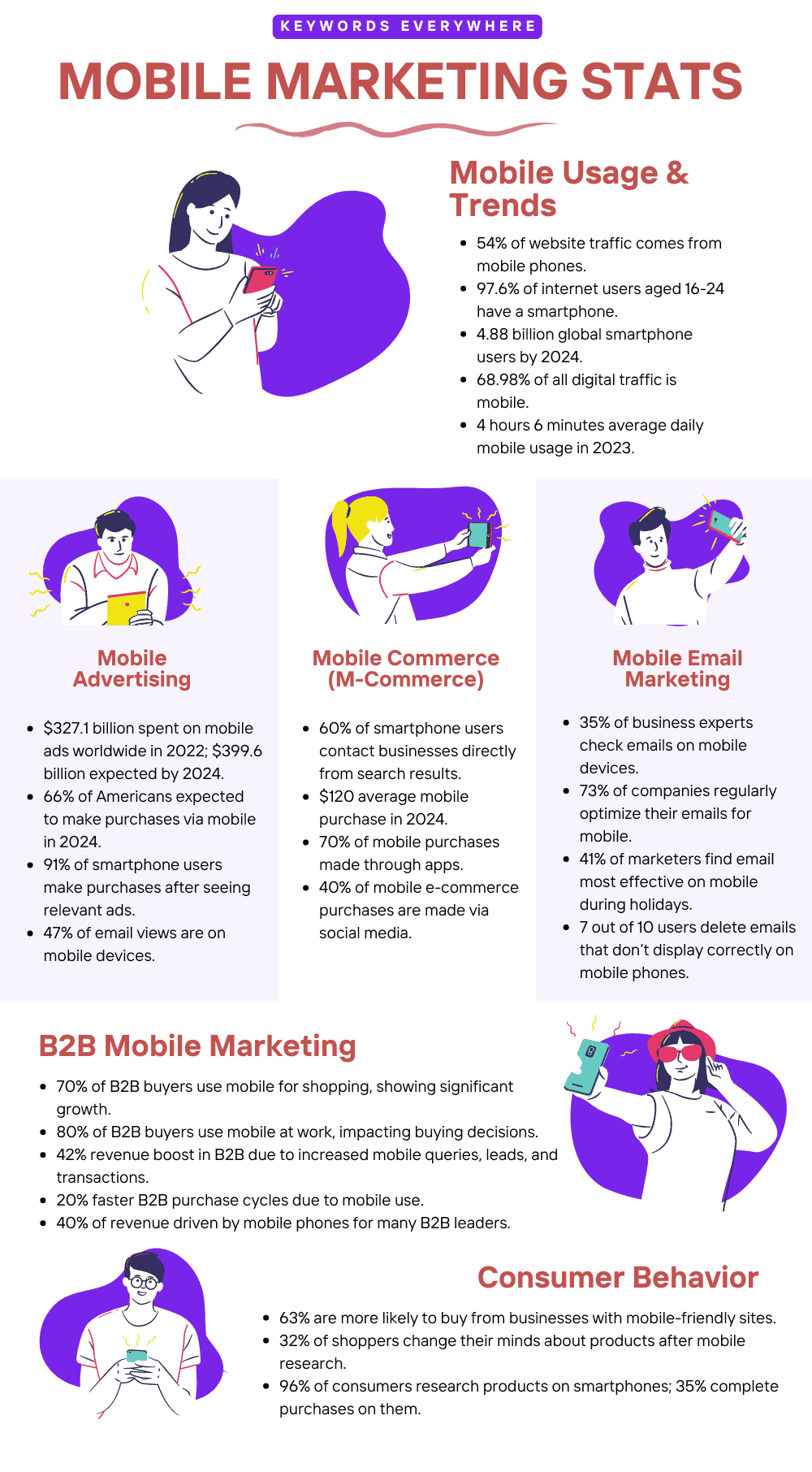The Expanding State of Mobile Search in 2025

Mobile search is no longer just a browser feature—it’s an intent-driven action that can begin from almost anywhere on a smartphone: the operating system, a mobile app, a voice assistant, a website’s internal search, or even a question posed to an AI chatbot via smartphone. As mobile devices have become the primary interface to digital life, the definition of search has broadened dramatically.
Mobile search now encompasses everything from spoken queries and predictive suggestions to visual discovery and in-app exploration. This article examines how mobile search has evolved into a pervasive, multi-channel experience, exploring key trends in voice input, AI-powered results, commerce behavior, and the growing influence of platforms beyond Google.
Table of Contents
The Current State of Mobile Search in North America
Mobile search now shapes how B2B and B2C businesses are discovered, researched, and engaged. This article examines the leading trends in mobile search, encompassing voice, AI, mobile commerce, and platform ecosystems.
Mobile Search
Google holds approximately 95% of the mobile search engine market share, confirming its dominant position.
WebFX
Google Mobile
Approximately 64% of all Google searches occur on mobile devices, reflecting the mobile-first nature of search behavior.
Semrush
Mobile Voice Search
Nearly 50% of U.S. adults use voice search daily, and over one billion voice searches are made each month.
MageComp
Mobile Featured Snippets
Featured snippets provide answers for 60% of voice queries, making them critical for voice visibility.
MageComp
Mobile AI Overviews
Google’s mobile generative AI (including AI Mode and older Overviews) is now broadly available, offering conversational summaries at the top of results pages.
Financial Times
Mobile Shopping Search
40.4% of e-commerce sales in the U.S. were made via mobile devices, with mobile sales projected to continue growing.
Emarketer
Platform and Ecosystem Dynamics
While Google continues to dominate the mobile search landscape, the broader mobile search ecosystem has become more fragmented and context-specific. Consumers no longer rely solely on traditional search engines to find information, products, or services. Instead, they turn to a variety of mobile-first platforms—ranging from social media apps to retail ecosystems—based on intent and convenience.
Mobile search behavior varies widely by demographic and use case. Amazon captures 56% of U.S. product searches, making it the primary discovery engine for shoppers. Shoppers often bypass Google entirely in favor of Amazon, where product discovery is closely tied to immediate purchase options.
Younger audiences, particularly Gen Z, increasingly use platforms like TikTok and Instagram as informal search engines, especially when seeking visual inspiration or peer-driven product recommendations. Meanwhile, Apple’s native tools—such as Siri, Spotlight Search, and Applebot—are quietly shaping how content is discovered within its ecosystem, especially on iOS devices.
Understanding these platform dynamics is essential for businesses aiming to maximize visibility in a mobile-first world. Search optimization is no longer just about ranking on Google—it’s about being findable across the full spectrum of mobile-native search experiences.
Takeaways
- Design Mobile-First Experiences: Ensure your mobile site loads quickly (less than three seconds), is responsive, and easy to navigate. Google’s AI-driven mobile indexing prioritizes mobile usability for rankings.
- Design Mobile Internal Search: Businesses should also optimize their mobile internal site search by ensuring fast, intuitive, and relevant results that accommodate natural language queries and support predictive suggestions.
- Enable Seamless Mobile Commerce: Integrate mobile wallets and minimize steps to purchase; 40% of ecommerce is mobile-driven, with growth continuing.
- Expand Visibility Beyond Google: For B2C, invest in Amazon listings; for Gen Z, engage with TikTok and Instagram’s discovery features; for Apple users, optimize for Siri and Spotlight indexing.
- Optimize for AI-Driven Search Responses: Organize content with clear headings, concise summaries, and structured data so it can be surfaced in AI-generated overviews on mobile.
- Stay Agile with Emerging Trends: Monitor developments in AI chat, visual search, privacy, and app ecosystems, and adapt your mobile presence accordingly.
- Strengthen Local and “Near Me” Visibility: Keep Google Business Profiles (GBP) up to date and leverage local keywords. Many mobile searches are location-based and drive in-store visits.
- Target Voice Search and Featured Snippets: Craft content in natural-question format and aim for featured snippets—vital for capturing voice assistant traffic.
Mobile search has become the dominant channel for discovery, making mobile optimization not just important but essential for businesses in every sector. Voice search is driving a shift toward more natural, conversational queries, increasing the importance of featured snippets and structured answers. At the same time, AI-generated overviews are reshaping the layout of search results, requiring content to be not just relevant but also formatted for visibility within dynamic summaries.
Mobile shopping behavior continues to accelerate, reinforcing the need for seamless, fast, and intuitive purchase paths. As users rely heavily on location-aware queries and discover content through apps and platforms outside traditional search engines, businesses must adopt a local and multichannel mindset.
And with platforms like Amazon, TikTok, Instagram, and Apple now playing critical roles in mobile discovery, visibility across ecosystems—not just Google—is key to sustained growth.







